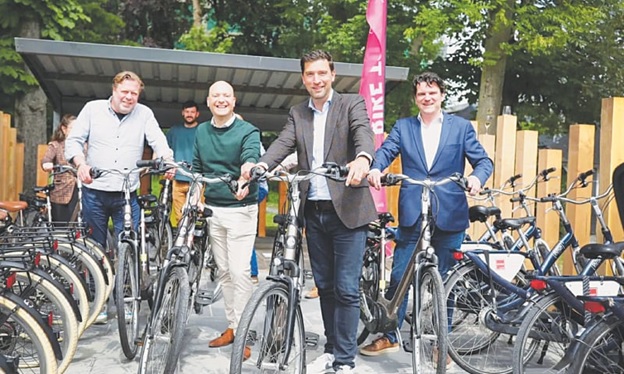

The electric bike, fitted with laser sensors and scanners, aims to gather data for a better understanding of the behavior of road users — Courtesy ImpactCity
Dutch Researcher Designs Unique E-Bike to Make Cycling Safer
Delft: Dutch university researcher Holger Caesar heads out into the afternoon traffic on a bicycle like no other, equipped to collect data he believes may one day save lives.
His blue electric bike, kitted out with an array of laser sensors and scanners, speeds off among thousands of students pedaling home through the campus of the Delft University of Technology.
The campus of TU Delft is a warren of cycle paths — a perfect encapsulation of life in a country where bicycles outnumber people. As Caesar cycles through Delft’s busy streets, his bicycle sweeps up data on the range, direction, and elevation of both moving and stationary objects — including cyclists, pedestrians, and cars.
The aim is to build a three-dimensional picture of its surroundings and a better understanding of the way road users behave.
“We hope these datasets will have lots of applications in the future,” he said, suggesting they could help cyclists avoid obstacles, build self-stabilizing bicycles, or teach autonomous vehicles how to avoid hitting two-wheeled travelers.
“For cars, it’s relatively simple … They go left. They go right. They go straight on. But it’s very hard to predict how cyclists are going to behave,” Caesar said.
“You could, for instance, use the data to develop an application that alerts car drivers when a cyclist makes an unexpected move.”
The “Delft SenseBike” itself would be at home in a science fiction film, equipped as it is with LiDAR sensors at the front and back. LiDAR — “Light Detection And Ranging” technology — is commonly used in autonomous vehicles, which use laser detection to create a three-dimensional image of their surroundings. - AFP

